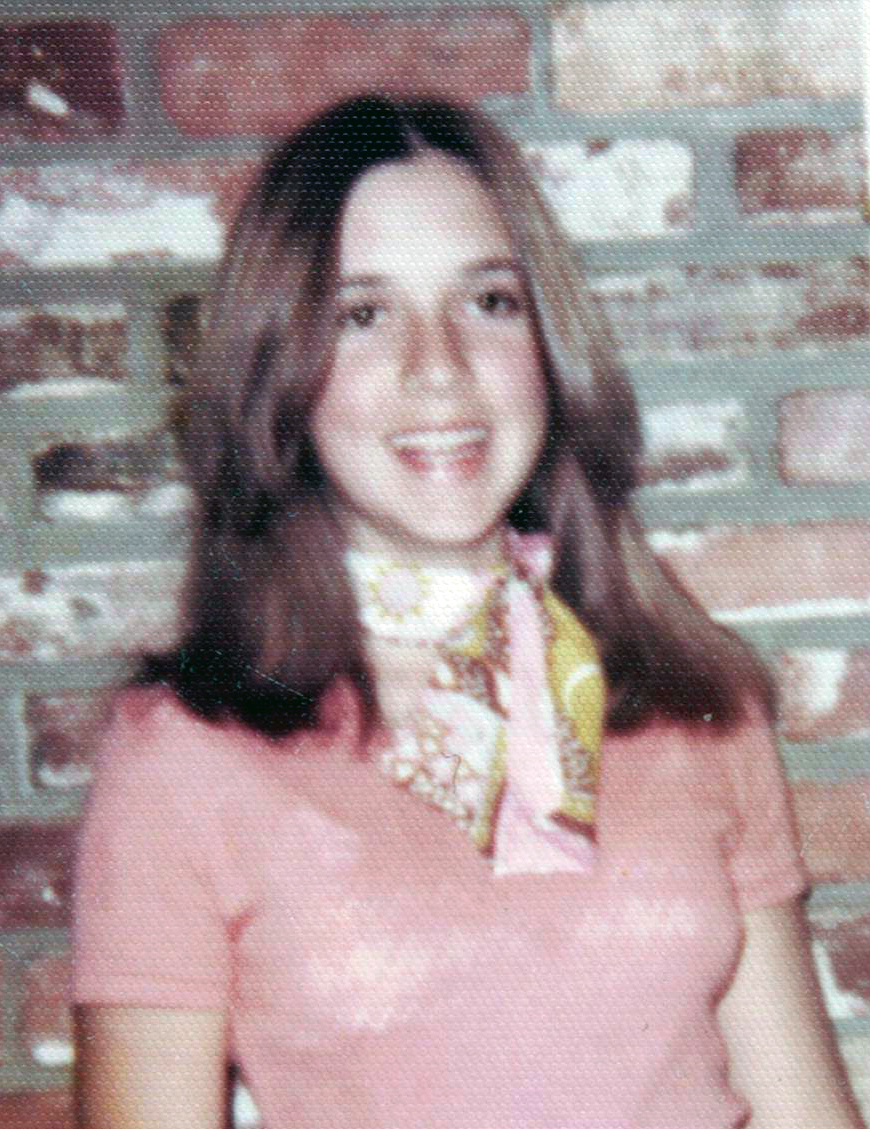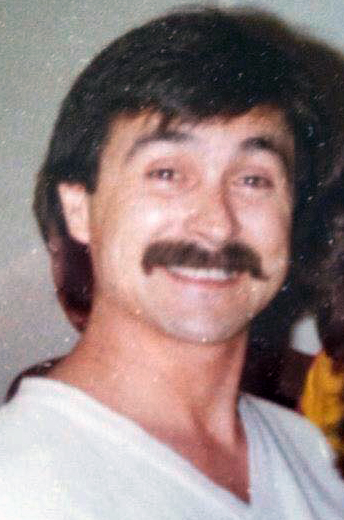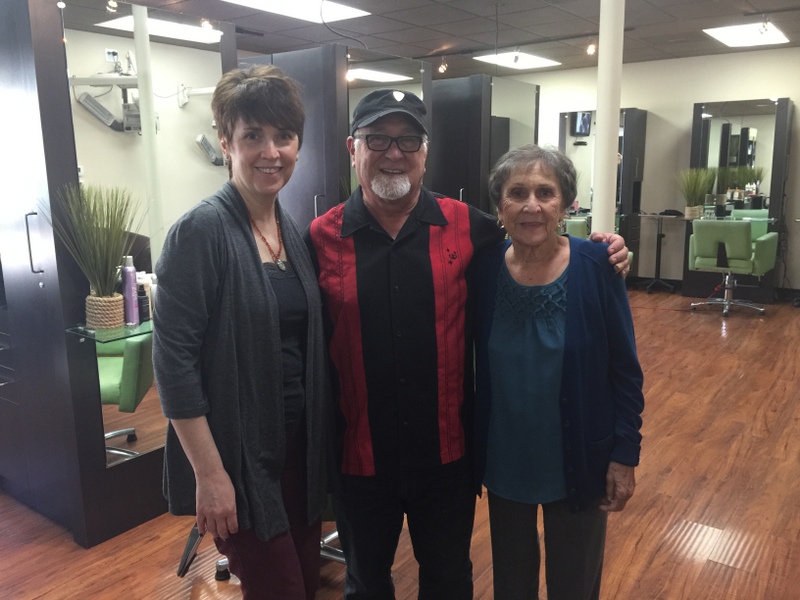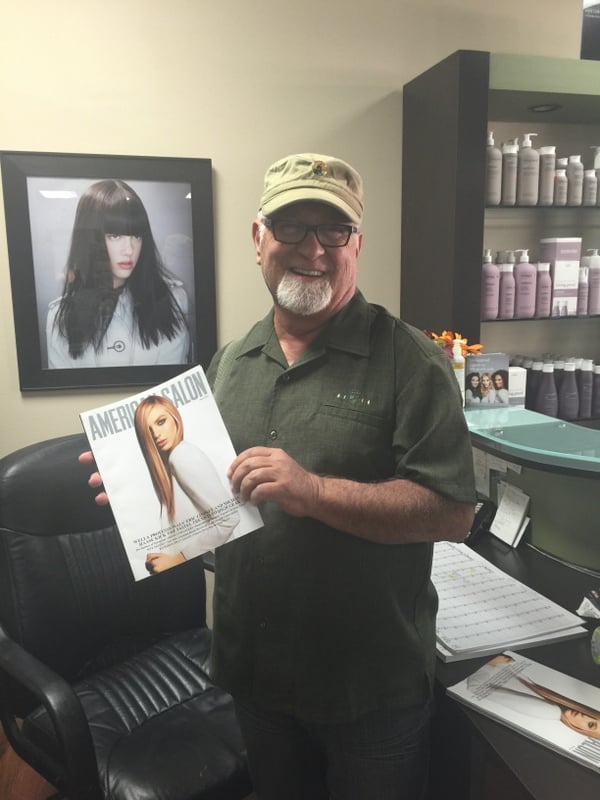 When she was just 14, Contributing Editor Karen Ford had the best haircut of her life. Read on to find out how she tracked her hairdresser down after 40 years. (And yes, she took photos!)
When she was just 14, Contributing Editor Karen Ford had the best haircut of her life. Read on to find out how she tracked her hairdresser down after 40 years. (And yes, she took photos!)
Read the entire story in this month’s issue.
The first thing Robert Saavedra said to me when we met for the first time in 40 years was, “I never used Aqua Net. It was all Redken by then.”
It was a stop-the-presses moment. I was there to thank him for the watershed experience of having been an early client back in 1975, and to get his impressions of the story I’d written about it, the one that was—at that very moment—being electronically transmitted to our printer. In an advance copy of the layout I’d sent to Saavedra, I’d written that he’d finished my new ‘do with a spritz of Aqua Net. Now he was telling me I’d gotten it wrong.
After a flurry of phone calls (the presses were stopped, disaster averted) we sat down to catch up on the last 40 years. The reunion would never have happened had it not been for my mother, Ernestine Shook. When I’d originally written the story, I’d remembered neither his name nor the name of the salon, and early drafts had referred to him simply as “my stylist.” Our editor-in-chief Marianne Dougherty suggested I try to find him. “Maybe he’s still doing hair,” she said.
Enter Mom, who still lives in Orange. I called her to ask if she remembered the name of the salon. She didn’t, but amazingly, she did remember his name: Robert Saavedra. The unusual spelling helped, I think. So did the fact that, back in the day, Robert Saavedra cut quite a figure. Apparently, both Mom and I had become his regular clients after that first visit, and he’d made quite an impression on my mother.
Ahem.
Once I had his name, tracking him down was easy. He is still doing hair. In fact, he’s the owner of Robert & Taylor Salon in Costa Mesa, CA, and when I first contacted him to tell him about the upcoming story, he couldn’t stop laughing.
“That was forty years ago!” he kept saying. I thanked him for reminding me.
The reunion took place at his salon in early February. Robert & Taylor is the latest iteration of a salon Saavedra started in 1979, with business partner Gary Taylor Straff (now deceased.) I brought Mom along – how could I not? I wanted to ask Saavedra whether I’d gotten more details right than wrong. (I had.) I wanted to know how things had changed in the industry since then. (A lot.) And, of course, I wondered about the mystery of the missing twenty. Alas, that would remain a mystery.
Robert Saavedra: I love the story. I don’t really recall this specific instance, but it sounds like something I would do.
would do.
Karen Ford: I wouldn’t expect it to be as significant to you as it was to me. Now that I’m involved in this industry, it’s not something that surprises me. As a group, people in this profession are so nice.
RS: I agree. It’s a great industry. In fact, my daughter Danielle actually works here. So it’s been passed on.
KF: Tell me what you remember about the salon in the story, Eastside Crimpers, and the people who worked there.
RS: It was a great job. It was actually my first salon job. I’d only been a hairdresser two or three years at that point. It was really the transition time between weekly clients, who’d come in for a wash and set, and haircutting. That salon was totally into haircutting. I learned both while I was in beauty school, but I pushed back away from setting hair and doing weekly clients and got into haircutting. Sassoon was real big, and the energy was all directed toward that. And I was really young, and enthusiastic, and that was where it was at. I learned a lot. The woman I was working for, Lorie Alexander, was a wonderful hairdresser, and still is. She works in Orange still.
KF: So in 1975 you were a newly-minted stylist. What is it that attracted you to that field?
RS: (laughs)
KF: This usually is a great story, when I ask hairstylists how they started.
RS: This is not a great story.
KF: No pressure…
RS: I was dating two different women…
KF: Now why doesn’t that surprise me?
Ernestine Shook: You were so handsome in those days!
RS: I had sold a business in L.A. and I’d moved to Orange County. I was looking for something to do with my life, and I was dating two different women who were both hairdressers. And they both told me I should be a hairdresser. And then they said, “You can wear what you want, and you can be around women all day.” And I said, “Yes, that’s for me!”
KF: So it really was like Shampoo in those days.
RS: It really was.
KF: I was surprised to learn that it came out that same year. Of course I was too young to see it at the time, but the images from that movie, and references to it, were everywhere.
RS: That character was in transition too, I guess, in the movie. When I saw the movie I went, “Ehh…uh-uh.” Because it really wasn’t what we were doing.
KF: Well, it was also set in the ‘60s as it turns out.
RS: There you go. He was doing sets, and that part of it I didn’t relate to, but I understood that whole thing. And I think he was actually portraying Gene Shacove, wasn’t he?
KF: I think I’ve heard that.
RS: Gene used to ride around L.A. on a motorcycle and all that stuff.
KF: Any stories about what it was like being a young hairdresser back in the day?
RS: That I can share, you mean?
KF: Oh, so it was like that!
RS: Trying to think back that far is a chore. Let’s see…’76 through ’86—those ten years? Are a blur in my mind. (laughs) It was quite an adventure.
I did do work across the country with John Dellaria and KMS. I traveled all over and realized how not-so-romantic traveling can be. I realized that really quick.
KF: Doing hair shows or education?
RS: Doing hair shows. I was kind of a second-tier guy. So I was in South Dakota…
 KF: Did you have mentors or idols in the business you looked up to or who gave you a leg up in the early years?
KF: Did you have mentors or idols in the business you looked up to or who gave you a leg up in the early years?
RS: Sure—tons of ‘em. Lorie Alexander, obviously, owner of the first salon I worked in, was one of my mentors. She didn’t teach me how to cut hair—she taught me how to look at people and figure out what they were all about. Paul Barry was pretty well-known in the industry. When I was in beauty school myself and Donn Matlack, who went on to a career in platform work, used to hang out at his salon, Paul Barry & Friends Cut Hair. We’d sit and watch Michael Kazol work and just pick his brain for hours.
Actually, Sassoon was my biggest mentor, but it wasn’t a personal relationship, it was more of an industry relationship that we had. I went to Sassoon Academy and studied hair there.
KF: What do you think are the biggest changes in being a hairdresser or running a salon between then and now?
RS: Well, you’re a national magazine, so I don’t know what’s going on across the country. But the biggest change here in California is rentals. And I get it: As a hairdresser, I can make more money renting. But clients are not getting the best end of the deal.
KF: Why is that?
RS: (points to the Goldwell rack in the back office) This is my color. There’s probably $8,000 worth of color right there. Every color that Goldwell makes. The rental people that I know have maybe 15 cans of color. They can’t do everything. They pretend that they can. But clients are getting led down the wrong path.
And then, I have a receptionist at the front desk, answering phones for my commissioned stylists and for me. Nine to five, Tuesday through Saturday, she’s at the front desk doing that, and answering any questions that they have. I’ve had more people tell me that they couldn’t get ahold of a rental stylist, for whatever reason. That doesn’t happen when you run a salon through the front desk.
So I get it—I get it totally—from a hairdresser’s perspective. The problem is, they’re not running their name like a business.
KF: What about from a style perspective—what’s the biggest change?
RS: I’m just so tired of all the clown hair.
KF: “Clown hair?”
RS: The wild colors. Just a few years ago we were joking about using them as costumes. It’s silly.
KF: Can I tell you something? I’m the only sister in my family without purple hair right now.
ES: I saw an old lady unloading the trunk of her car the other day who had bright blue hair. 
KF: Well, Mom, we’re not exactly young ladies anymore.
ES: It’s a fad. Women will always follow the fads.
RS: The problem is, it’s lasted quite a while!
KF: So how would you describe your style aesthetic today?
RS: My early major influences were from Vidal. I enjoyed the challenge of precise cutting techniques that he established. In the early 70's cutting hair to be worn for the cut was still in its infancy. In those days A-line haircuts and geometric looks were very popular. I've always been attracted to healthy, classic; classy well cut hair on women. I have a hard time defining the term classy. For me it's a sense of style that's felt, like looking at great architecture or a beautifully designed car. That sense of style and balance that I love has stayed with me for that last four decades.
My clients, some of which I've had for thirty-plus years, tend to be professional women in business for themselves or married to a professional. I think they come to my salon because they have a high degree of trust in our people. - Karen Ford
To read The Kindest Cut click here!